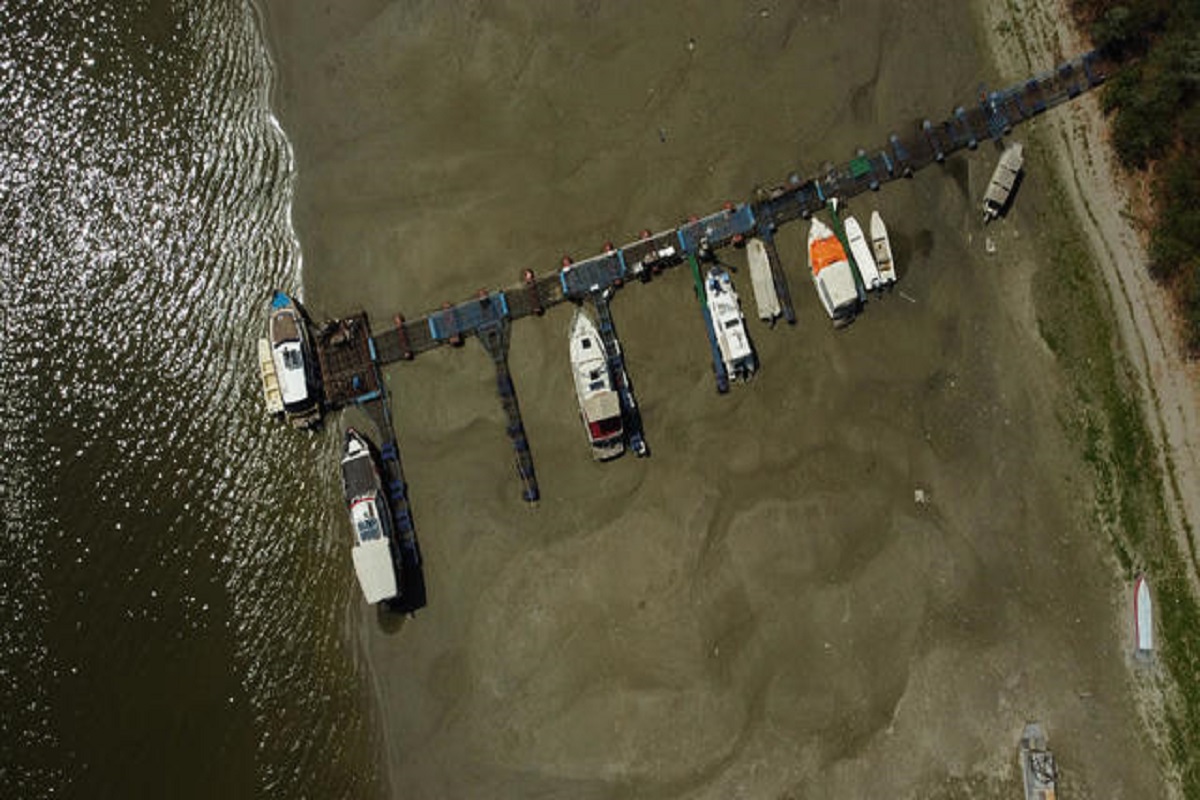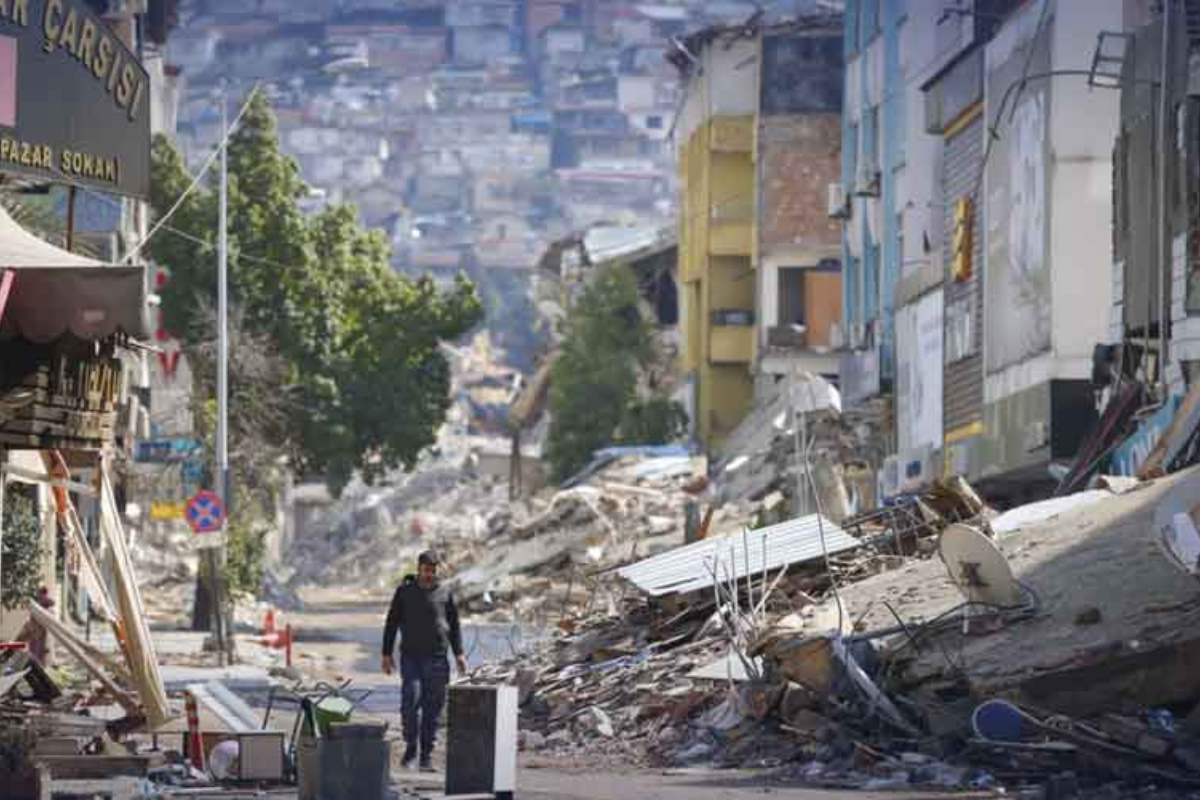- Climate artefacts is a mini-series about drought- and warming-related discoveries of people, places, and items.
- The climatic crisis has revealed ancient warships, a city, and human remains.
- In 1944, loud explosions woke Vojislav Lapadatovic in Prahovo, Serbia, who had been having strange visitors for several days.
The climatic crisis has revealed ancient warships, a city, and human remains. “Climate artefacts” is a mini-series about drought- and warming-related discoveries of people, places, and items.
On September 6, 1944, loud explosions woke Vojislav Lapadatovic in Prahovo, Serbia.
The 20-year-old hurried toward the river, where Prahovo had been having strange visitors for several days.
In the final months of World War II, the Red Army of the Soviet Union pushed Nazi Germany back toward Berlin while securing the Balkans through Romania.
The remaining ships of the German Black Sea fleet had fled up the Danube, stopping in Prahovo after 860km (534 miles).
In 2003, Lapadatovic informed Der Spiegel that he ran 150 meters (about 500 feet) to the Danube. “The Germans sank their fleet, including the large three-story hospital ship for front-line wounded.”
Rear Admiral Paul Willy-Zieb, the fleet’s commander, decided its situation was hopeless and ordered the demolition of hundreds of ships to prevent the Soviets or their allies from capturing them.
German ships were scuttled in a zigzag fashion to block enemy ships after offloading cargo and armaments.
The wreckage are along a 43km (26-mile) stretch of the Danube, Europe’s second-longest river, which flows through 10 nations from south Germany to the Black Sea in Romania. Prahovo has at least 40 of these wrecks. In times of intense dryness, their remains reappear, like earlier this year when the Danube reached historically low levels due to a European drought.
When the water level drops, some of the corroded, bent, and damaged hulls poke out of the sandbanks, revealing their cannon barrels and command bridges after almost 80 years.
Germany sent hundreds of tiny ships to the Black Sea, which was not a major naval theatre. They mostly supplied the German forces through Ukrainian ports acquired during the 1941 Soviet invasion.
It helped conquer Crimea’s crucial port of Sevastopol in 1942 despite being too small to challenge the Soviet fleet.
The fleet’s last mission began in August 1944 when the Soviet Union’s Second Jassy–Kishinev assault, a drive through the front lines in northern Romania, encircled and crushed the German Sixth Army, clearing the stage for a comprehensive Balkan takeover.
Nazi high command ordered all ships in the Black Sea and lower Danube to retire, aiming to cruise 2,000km (1,242 miles) up the river to Austria.
Zieb, a senior navy commander who ran the Bucharest German shipyard, led a battle force to try the daring operation.
According to archaeologist and historian Gordana Karović, the heavily armed convoy, up to 25km (15 miles) long, consisted of 170 to 250 naval craft, including cargo ships, patrol boats, tankers, landing ships, and one hospital ship, the Bamberg. Over 4,000 people were on board, including 1,500 civilians.
Romania’s King Michael toppled Nazi puppet leader Ion Antonescu two days before Zieb’s flotilla sailed up the Danube.
Romanian troops, who had been Germany’s allies just days before, then bombarded the convoy with artillery, sinking dozens of ships and killing hundreds at Cernavodă in the east and Calafat near the Serbian border in the west.
After arriving at Prahovo on September 2, landing and artillery ships attempted four breaches farther up the river but were defeated with heavy losses. Zieb flew to Belgrade from the village’s airfield and learned that the Red Army had taken the Iron Gates, a mountainous valley that controls Danube flow.
The flotilla was vulnerable to the stronger Soviet and Romanian army on the Danube’s left bank after German forces in Serbia withdrew.
Lapadatovic told Der Spiegel that locals were paid in figs to pull armaments off ships before they were scuttled. Vojislav Janković said German soldiers chanted “Heil Hitler” as they destroyed the ships.
Some troops and equipment were evacuated from Prahovo’s train station, while others walked to Belgrade, which the Germans held until October 20, when Josip Broz Tito’s Yugoslav partisans took it.
Since their sinking, the Black Sea fleet wrecks, many of which held weapons or explosives, have jeopardized Danube navigation. The obstacle delayed hundreds of cruise ships each year for hours.
After the war, the Soviet Union and Yugoslavia removed several dozen ships, but most remain where they sank.
Serbia has tried to remove the impediment in recent years.
The commander who sank Germany’s Black Sea fleet had to prevent the Kriegsmarine’s sabotage or scuttling before the Allies divided its ships as war prizes.
[embedpost slug=”god-give-us-rain-romanian-monastery-prays-for-end-to-drought”]





















